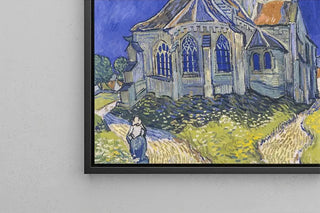Art print of The Demolition of the Church of the Innocents on Saint-Denis Street - Pierre-Antoine Demachy


View from behind

Frame (optional)
The demolition of the Church of the Holy Innocents on Saint-Denis Street: a testament to a erased past
"The demolition of the Church of the Holy Innocents on Saint-Denis Street" is a work that captures a moment of transition, where the old gives way to the new. The brushstrokes evoke sadness and melancholy of destruction, while highlighting the architectural details of the church. The dark colors and accentuated shadows create a heavy, almost dramatic atmosphere. This art print, through its poignant subject, invites reflection on collective memory and the impact of urban changes on a place's identity. Every element of the composition seems to tell a story, that of a heritage in danger of disappearing.
The demolition of the Church of the Holy Innocents on Saint-Denis Street: a reflection of a bygone era
The artist of "The demolition of the Church of the Holy Innocents on Saint-Denis Street" is set within a historical context marked by architectural and social upheavals in Paris. In the late 19th century, many churches and historic buildings were destroyed to make way for new urban developments. This work is a heartfelt cry, a way to preserve the memory of a building that has seen generations pass by. The artist, through their work, emphasizes the importance of heritage preservation and invites reflection on the evolution of cities and their history.
A decorative art print with multiple assets
The art print of "The demolition of the Church of the Holy Innocents on Saint-Denis Street" is a bold choice for those wishing to add a touch of history to their interior decor. Whether in an office, a living room, or a bedroom, this canvas sparks curiosity and dialogue. Its reproduction quality ensures remarkable fidelity to the details of the original work, allowing full appreciation of its visual impact. By incorporating this art print into your space, you do not just beautify your interior, but also invite reflection on the past and its influence on our present.

Matte finish

View from behind

Frame (optional)
The demolition of the Church of the Holy Innocents on Saint-Denis Street: a testament to a erased past
"The demolition of the Church of the Holy Innocents on Saint-Denis Street" is a work that captures a moment of transition, where the old gives way to the new. The brushstrokes evoke sadness and melancholy of destruction, while highlighting the architectural details of the church. The dark colors and accentuated shadows create a heavy, almost dramatic atmosphere. This art print, through its poignant subject, invites reflection on collective memory and the impact of urban changes on a place's identity. Every element of the composition seems to tell a story, that of a heritage in danger of disappearing.
The demolition of the Church of the Holy Innocents on Saint-Denis Street: a reflection of a bygone era
The artist of "The demolition of the Church of the Holy Innocents on Saint-Denis Street" is set within a historical context marked by architectural and social upheavals in Paris. In the late 19th century, many churches and historic buildings were destroyed to make way for new urban developments. This work is a heartfelt cry, a way to preserve the memory of a building that has seen generations pass by. The artist, through their work, emphasizes the importance of heritage preservation and invites reflection on the evolution of cities and their history.
A decorative art print with multiple assets
The art print of "The demolition of the Church of the Holy Innocents on Saint-Denis Street" is a bold choice for those wishing to add a touch of history to their interior decor. Whether in an office, a living room, or a bedroom, this canvas sparks curiosity and dialogue. Its reproduction quality ensures remarkable fidelity to the details of the original work, allowing full appreciation of its visual impact. By incorporating this art print into your space, you do not just beautify your interior, but also invite reflection on the past and its influence on our present.






